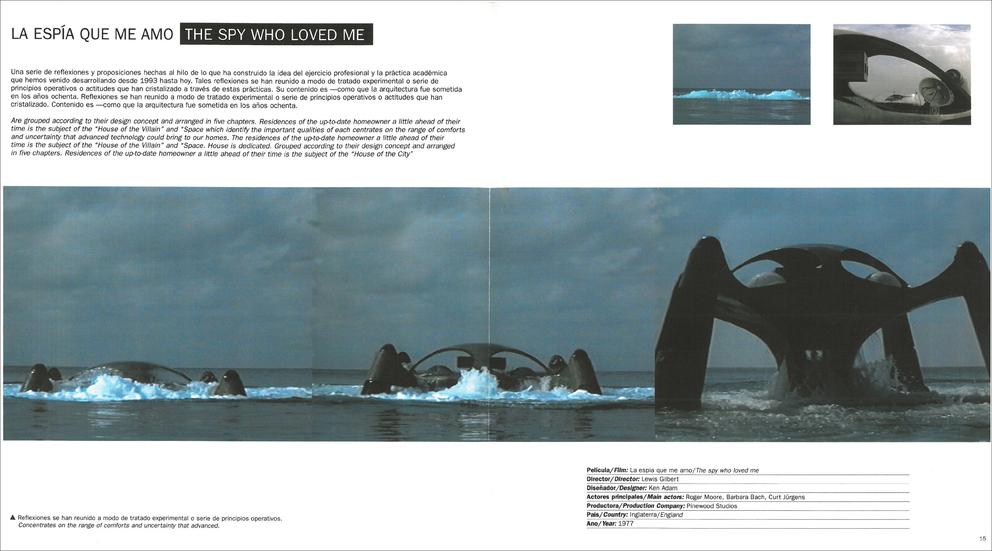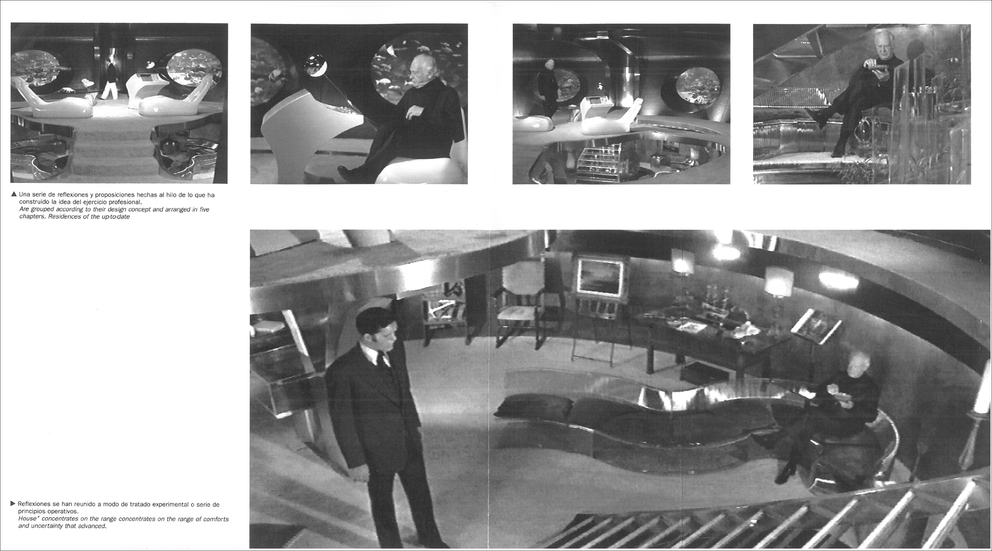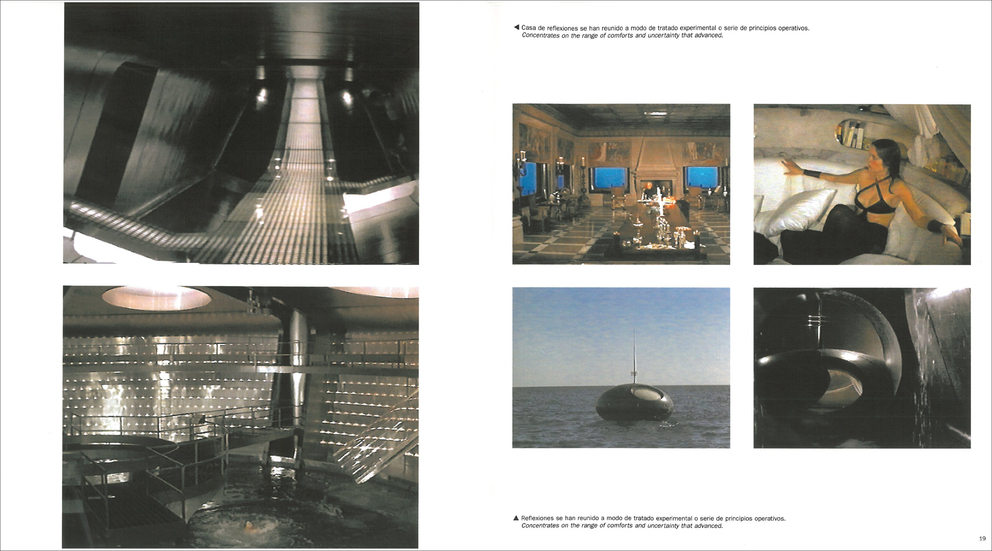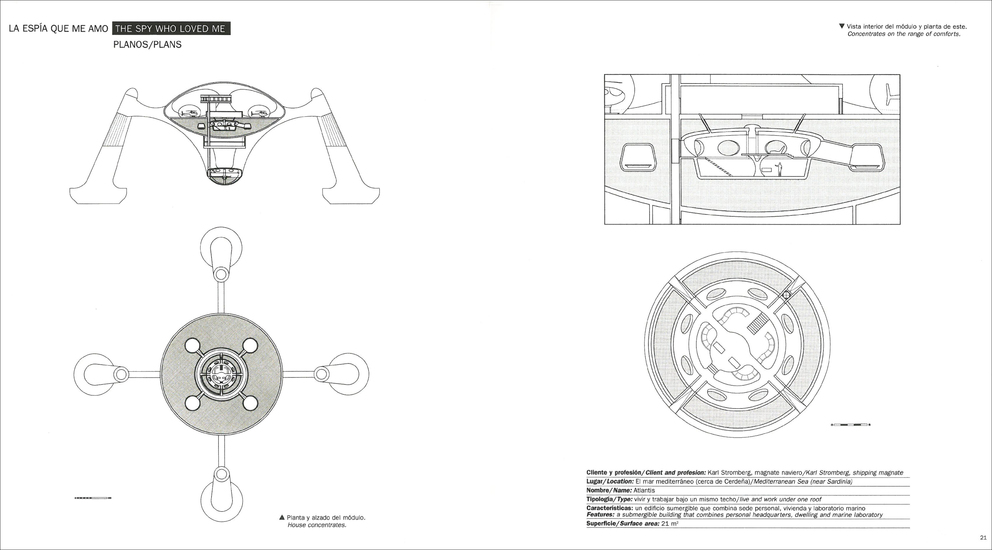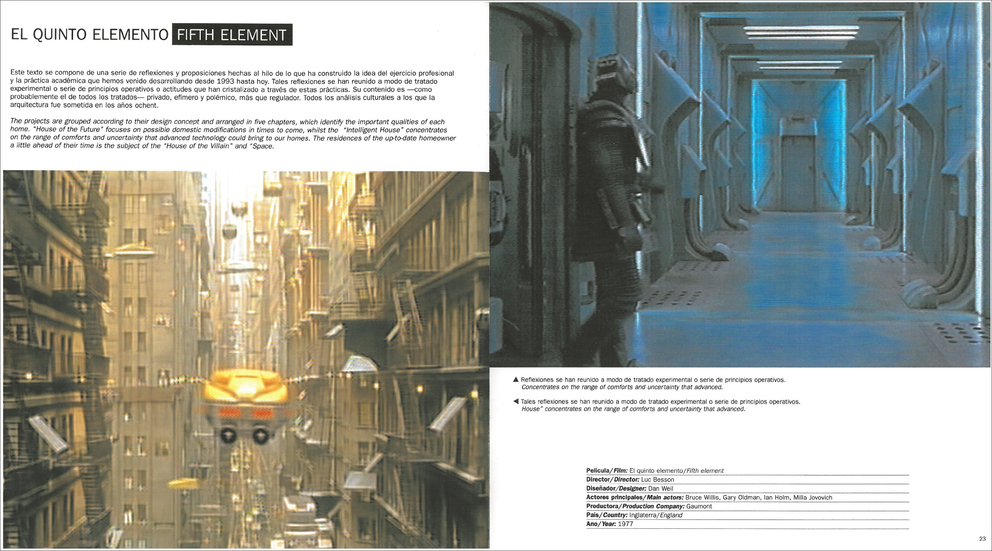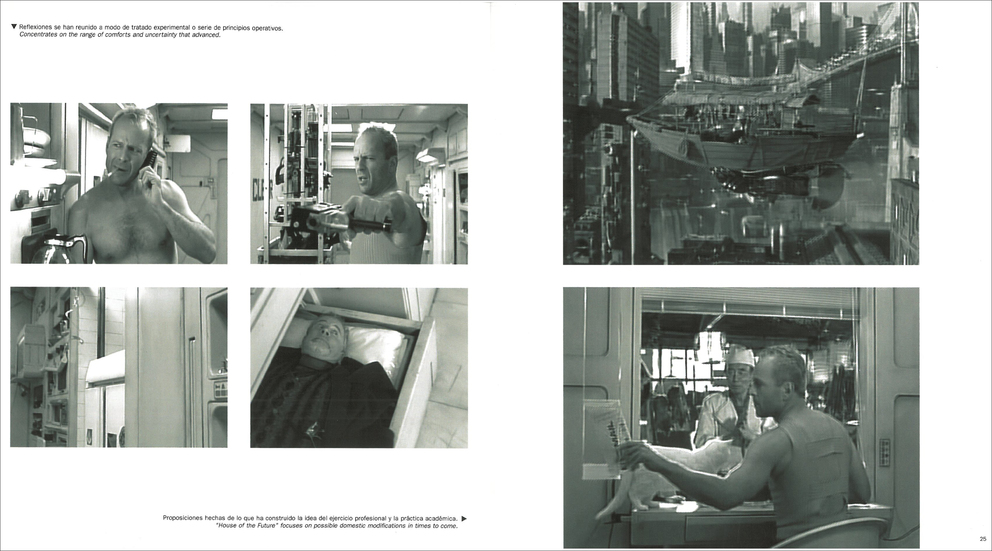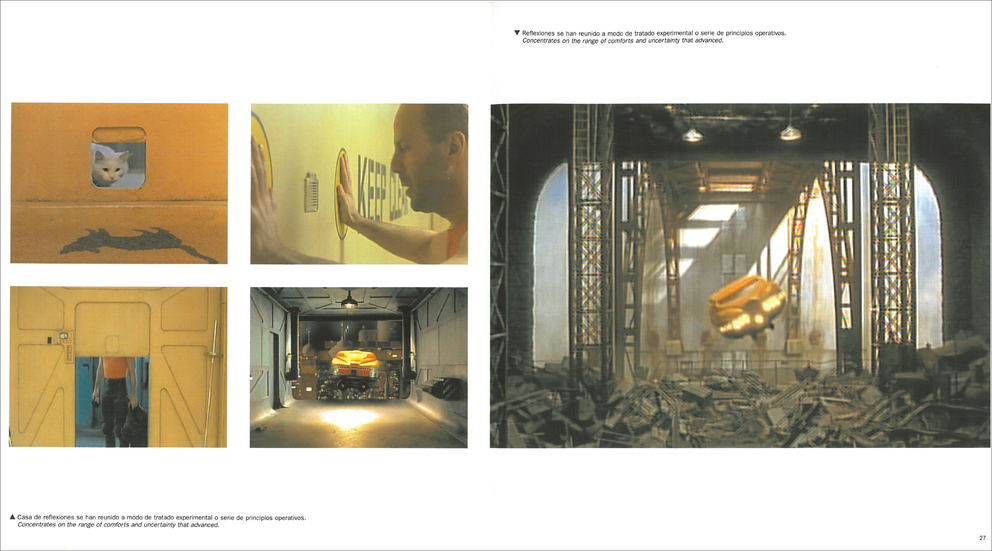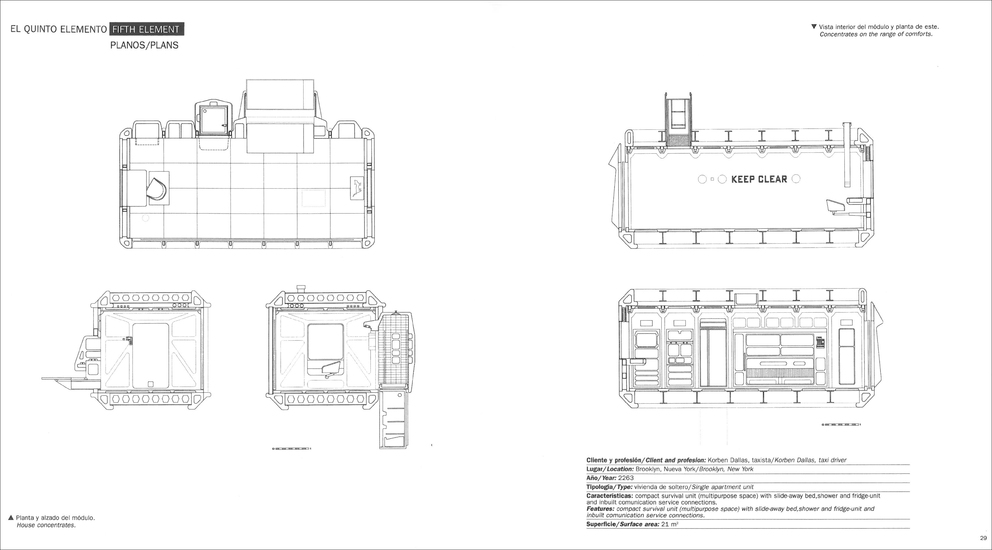Book: Film houses - Visionary dwelling in the cinema
The book examines visionary domestic architecture in film, compiling 20 houses of extraordinarily imaginative conception. The typology, size and character of each of these homes dating from 1924 to 1997 portray concurrent visions of a hypothetical future and represent the prevailing sentiment and political mood of the time in three dimensions.
“Film Houses” comprises fictional houses from the French avant-garde in the 1920’s (L’Inhumaine) as well as examples from the modern movement (The Fountainhead) and its sterile pitfalls (Mon Oncle). It includes utopian dwellings from the 1960’s (The Sleeper), high-tech homes (The Spy who loved me) and post-apocalyptic metropolitan city flats (Blade Runner, Fifth Element).
The selection criteria for the featured homes are, above all, based on their architectural merit. Visionary quality, coherent style and cultural significance are important aspects of these private dwellings that enter the public realm on the screen. The book examines this hybrid between public and private, compiling a series of film houses that share a visionary power and symbolic weight usually reserved for public buildings.
The projects are grouped according to their design concept and arranged in five chapters, which identify the important qualities of each home. “House of the Future” focuses on possible domestic modifications in times to come, whilst the “Intelligent House” concentrates on the range of comforts and uncertainty that advanced technology could bring to our homes. The residences of the up-to-date homeowner with a weakness for sophistication and style are assembled in the chapter “Modern House”. The homestead of the notoriously bad, who are a little ahead of their time, is the subject of the “House of the Villain” and “Space House” is dedicated to models of dwelling in the adverse conditions of outer space.
All of the houses in this publication are of a fictional nature; their physical presence is confined to the screen. The technical specifications and drawings accompanying each of the projects are a re-construction of the architectural fiction in the film and have been specifically produced by the author for the book.
Credits
Title: Film houses- Visionary dwelling in the cinema
Date: 2000-2001
Author: Julia Schulz-Dornburg
Publisher: To be found


